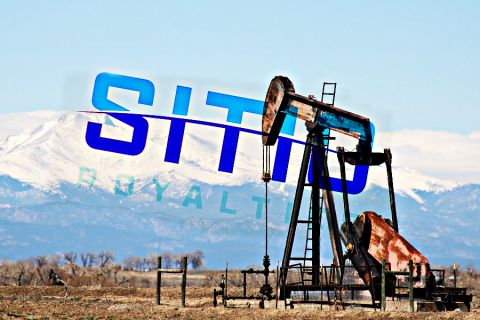In a surprise move, ethane margins remained positive at both Mont Belvieu and Conway the week of March 12. As was the case the prior week, this improvement shouldn’t be taken as a sign of ethane economics improving so much as the market benefitting from the cyclical downturn in gas prices during the spring shoulder season.
Gas prices fell 6% at Conway to $4.38/MMBtu and 4% to $4.40/MMBtu at Mont Belvieu despite another cold front that swept through the Northeast and Midwest. However, this was short-lived and spring temperatures are fast becoming the norm in much of the U.S., which is causing heating demand to level off. Additionally, storage injections are starting to take place that would hamper any demand pulls from having a meaningful impact on stock levels or prices.
There is a growing uncertainty over how quickly gas storage levels can reload. Some experts anticipate it will be difficult to fully reload (see this week’s article, “Full Reload Of Gas Storage Levels May Not Be Possible”), the EIA is forecasting a record build in gas storage levels during this year’s injection season due to increased production and moderate gas demand from utilities.
There is still a great deal of competition between gas and coal for electric power generation. If gas prices were to fall to a level where it is more economical to make it the preferred fuel of choice for utilities—as it was two years ago—or this summer proves to be warmer than normal, there are likely to be stronger withdrawal levels. However, the demand levels would need to achieve a difficult balancing act. As demand for gas increases, it typically becomes more expensive, causing power plants to switch to coal. Less demand would likely produce prices that could incentivize fuel switching, but without sufficiently high demand levels it is unlikely to have a noticeable impact on storage. This is likely to remain the case until EPA air regulations on coal-fired power plants go into effect in the next few years.
Ethane prices are likely to continue to rise and fall in the near-term until more petrochemical or export infrastructure is built. Prices fell 9% to 30 cents per gallon (/gal) at Mont Belvieu, their lowest level since the second week of January. Conway prices dipped 4% to 32 cents/gal with very low volatility. Although margins were theoretically positive, once transportation costs are taken into consideration they remain realistically negative at both hubs. In practice, margins aren’t positive until they reach between 6 cents/gal to 9 cents/gal.
As heating demand retracts, so are propane prices. One month after hitting their nearly six-year high at Mont Belvieu, prices fell another 1% from the previous week to $1.06/gal. This is just below the Conway price of $1.08/gal, which was down 4% from last week. In seven weeks, propane prices in the Midcontinent have lost nearly $3.00/gal in value.
Despite these prices, it is likely that propane stock levels will be tight when fall arrives, according to En*Vantage. “..[I]t will be difficult to rebuild propane stocks at an average weekly rate of 1.3 million bbl during the spring and summer months to reach the five-year average level by the end of October. Note that the capability to export propane this year is much greater than it was last year at this time and the arbitrage to export propane at sufficient levels to support spot cargoes of propane. Midcontinent propane markets could be extremely tight this fall unless Conway prices induce propane to be retained in the region rather than be transported via Y-grade lines to the Gulf Coast to be fractionated and then exported and/or cracked,” the company said in its March 13 Weekly Energy Report.
The lone NGL to experience a noticeable price increase during the week was Mont Belvieu C5+, which rose 4% to $2.21/gal, its highest price since it was $2.24/gal the week of Sept. 11, 2013. This was primarily due to increased crude prices related to geopolitical fears related to the Ukraine and Crimea. The Conway price fell 2% to $2.23/gal as that market is rebalancing after trading at a very high $2.27/gal price the previous two weeks.
The theoretical NGL bbl price fell 3% to $42.99/bbl at Conway with a 1% drop in margin to $26.99/bbl The Mont Belvieu price decreased slightly to $42.27/bbl with a 2% gain in margin to $26.19/bbl. The most profitable NGL to make at both hubs was C5+ at $1.75/gal at Conway and $1.72/gal at Mont Belvieu. This was followed, in order, by isobutane at 88 cents/gal at Conway and 85 cents/gal at Mont Belvieu; butane at 73 cents/gal at Conway and 79 cents/gal at Mont Belvieu; propane at 68 cents/gal at Conway and 66 cents/gal at Mont Belvieu; and ethane at 3 cents/gal at Conway and 1 cent/gal at Mont Belvieu.
Natural gas storage levels fell below 1 trillion cubic feet (Tcf) the week of March 14 as the EIA reported that they decreased 48 billion cubic feet (Bcf) to 953 Bcf from 1.001 Tcf the previous week. This was 49% below the 1.885 Tcf posted last year at the same time and 48% below the five-year average of 1.829 Tcf.


Recommended Reading
Deep Well Services, CNX Launch JV AutoSep Technologies
2024-04-25 - AutoSep Technologies, a joint venture between Deep Well Services and CNX Resources, will provide automated conventional flowback operations to the oil and gas industry.
EQT Sees Clear Path to $5B in Potential Divestments
2024-04-24 - EQT Corp. executives said that an April deal with Equinor has been a catalyst for talks with potential buyers as the company looks to shed debt for its Equitrans Midstream acquisition.
Matador Hoards Dry Powder for Potential M&A, Adds Delaware Acreage
2024-04-24 - Delaware-focused E&P Matador Resources is growing oil production, expanding midstream capacity, keeping debt low and hunting for M&A opportunities.
TotalEnergies, Vanguard Renewables Form RNG JV in US
2024-04-24 - Total Energies and Vanguard Renewable’s equally owned joint venture initially aims to advance 10 RNG projects into construction during the next 12 months.
Sitio Royalties Dives Deeper in D-J with $150MM Acquisition
2024-02-29 - Sitio Royalties is deepening its roots in the D-J Basin with a $150 million acquisition—citing regulatory certainty over future development activity in Colorado.





